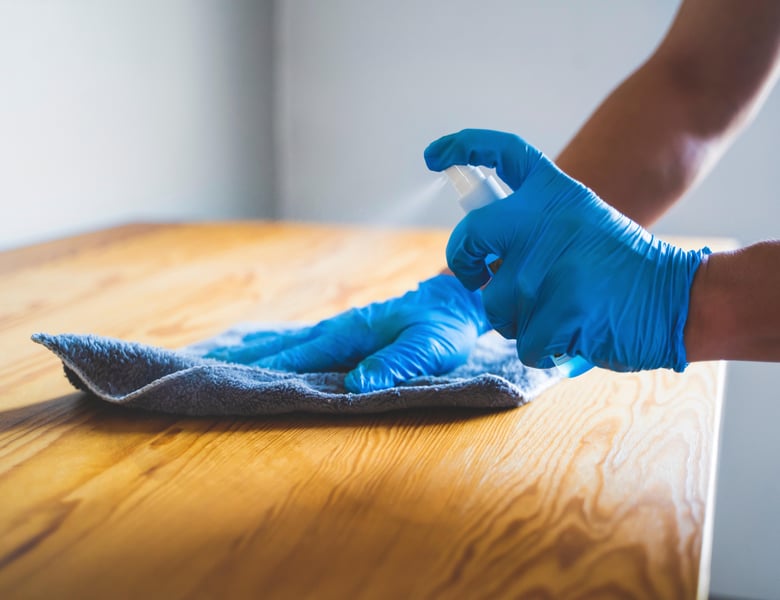155 SE 2nd Main St Hillsboro, OR 97123
Thank you for your patience!**
Now offering Flu Shots. Walk-ins available!
We also offer "Monoclonal Antibodies" treatment for patients with Covid-19.
Get Healthy!

- Posted April 7, 2023
COVID-19 Infects Through Touched Surfaces in Homes, Study Confirms
For what they say is the first time, British researchers report that they have found the spread of COVID-19 in households is linked to the presence of the virus on hands and surfaces, not just in the air.
The investigators collected data from households at the height of the pandemic, finding that people were much more likely to get COVID-19 from someone in their house if virus was present on hands or frequently touched places, like refrigerator door handles or sink faucets.
“There's no doubt that if you have COVID-19, you're emitting the virus into the air as micro-aerosols as well as large droplets that land on your hands and the surfaces around you. What hasn't been shown, until now, is that the presence of the virus on people's hands or household surfaces predicts transmission to contacts,” said study author Ajit Lalvani. He is director of the National Institute of Health and Care Research (NIHR) Health Protection Research Unit (HPRU) in Respiratory Infections.
The NIHR HPRU is a research partnership between Imperial College London and the UK Health Security Agency. Researchers from University of Oxford also worked on the study.
“Our real-life study in London households provides the first empirical evidence to show that the presence of SARS-CoV-2 on people's hands and surfaces contributes significantly to spread of COVID-19. Since we didn't systematically sample household air, we cannot rule out airborne transmission occurring in parallel,” Lalvani said.
The researchers studied COVID-19 transmission in 279 London households, recruiting 414 household contacts who lived with 279 people who were newly diagnosed with COVID-19 between Aug. 1, 2020, and March 31, 2021.
Very few of the household contacts had been vaccinated yet or previously infected, which made them susceptible to infection. They ranged in age between 6 and 79 years.
The research team checked all the contacts regularly using PCR tests in the nose and throat, while also swabbing the hands of both the primary cases and their contacts. The researchers also took samples from frequently touched communal areas, to measure the amount of virus genetic material and the number of particles.
“In houses in which we found the virus on surfaces and the hands of participants, infection among contacts, and thus transmission, was significantly higher,” said study first author Nieves Derqui, from Imperial College London's NIHR HPRU in Respiratory Infections.
Although the study authors accounted for other potentially influential factors, they still found that if the virus was detected on primary cases' hands, then contacts in their household were 1.7 times more likely to get infected than those in households where primary cases did not have the virus on their hands.
The presence of virus on primary cases' hands was also associated with a three times greater risk of contacts in the household having a positive hand-swab. Contacts with the virus on their hands were twice as likely to become infected with COVID-19.
If virus was present on frequently touched surfaces in the household, contacts were 3.8 times more likely to have detectable virus on their hands and 1.7 times more likely to be infected, the researchers reported.
Six of the contacts who were initially uninfected but became infected with COVID-19 during the study had positive hand or household surface swabs prior to becoming infected.
The authors said this supports that transmission came from household surfaces and contacts' hands to their nose and throat.
When possible, the researchers did whole genome sequencing of the 25 primary cases and their contacts. This confirmed that each primary case-contact pair was infected with the same virus strain, which supported that transmission happened in the household.
“My team's Herculean logistical undertaking during the challenging circumstances at the height of the pandemic in real-life households strongly supports the theory that SARS-CoV-2 transmission from contaminated surfaces and hands does occur in households,” Lalvani said in a college news release.
“With successive new variants likely to spread widely despite booster vaccinations, the simple, easily applicable public health interventions and messaging underpinned by our evidence are a valuable, risk-free and timely addition to the toolkit for living safely with COVID-19,” he added.
The study was observational and can't prove causation, and it also can't rule out airborne transmission. Other limitations were that non-white ethnicities and older age groups were under-represented in the study, and that the timing was when early variants were spreading, which means that the results may not apply to more recent variants.
The findings were published April 6 in The Lancet Microbe.
More information
The U.S. Centers for Disease Control and Prevention has more on COVID-19.
SOURCE: Imperial College London, news release, April 6, 2023







